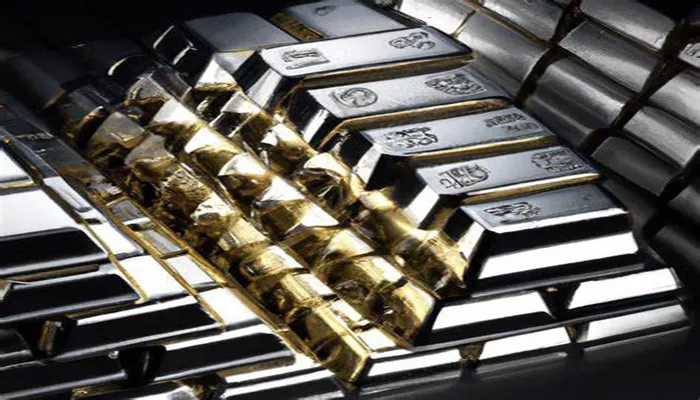In the bustling markets of Tehran, a salesman’s words resonate deeply with many shoppers: “Your money is dead,” he says, urging them to invest in gold as a safeguard against Iran’s crumbling currency, the rial. Over the past year, gold prices in Iran have risen significantly, outpacing global trends, as businesses and ordinary citizens alike seek refuge in the precious metal amid rising geopolitical tensions and mounting economic challenges.
The price of gold coins in Iran has surged more than 80% over the past 12 months in rial terms, climbing from IR401 million to IR735 million (approximately $900). This marks a sharp contrast to the 45% increase in global gold prices over the same period. The soaring gold prices have driven many Iranians to buy bullion as a hedge against a volatile economy, with fears of military confrontation with the US and Israel exacerbating the demand for safe-haven assets.
However, some analysts caution that this surge could be forming a precarious bubble. As the economy becomes increasingly dependent on gold, a correction has already occurred, triggered by renewed hopes of a nuclear deal with the US. Despite this, Iran’s status as the world’s fifth-largest consumer of gold bars and coins has helped fuel the global market’s rally.
Record Gold Imports Reflect Rising Demand
Iran has become a major player in the global gold market, importing a record 100 tonnes of gold—worth about $8 billion—during the 12 months leading up to March 2025, according to government data. Some analysts suggest that the actual volume of imports could be much higher, with gold flowing through neighboring countries like the United Arab Emirates and Turkey.
Majidreza Hariri, head of the Iran-China Chamber of Commerce, likens gold to a weapon for Iran’s economy. “If other countries run their economies like conventional armies, we operate like guerrillas,” Hariri explains. “Today, it might be gold, tomorrow it could be [cryptocurrency] Tether.” His comments reflect a broader strategy by Iran to use gold as a means of circumventing international sanctions.
There is also speculation that the Central Bank of Iran has been quietly building up large reserves of gold to protect against future economic pressures, although the bank has not commented on the matter. Analysts believe that the opaque nature of the global gold market and the small size of the metal make it an ideal asset for Iran to continue importing and holding without attracting significant attention.
Gold Imports and Government Policy Shifts
Until recently, Iran’s government actively encouraged businesses to bypass banking restrictions by accepting payments in gold. However, reports suggest that this policy was suspended in late March 2025, with no official explanation given for the shift.
Gold’s Appeal Continues Despite Volatility
The volatility of gold prices in Iran has left some investors vulnerable. Prices for gold coins briefly surged past IR1 billion at the end of March, before a correction followed the commencement of nuclear talks between the US and Iran. One Tehran resident, Fatemeh, a 24-year-old housekeeper, purchased 16 grams of unworked gold bullion at the peak of the market. However, after the price dropped, she lost significant value on her investment. “I wasn’t trying to make a profit,” she said. “I just didn’t want to lose my family’s savings. But sadly, we did.”
Despite this setback, the demand for gold continues. With the ongoing stalemate in nuclear talks and escalating tensions with the US, many Iranians continue to view gold as a safe store of value.
Storing Wealth Outside the Banking System
Amid the ongoing economic uncertainty, many Iranians are believed to be hoarding gold and US dollars in their homes, bypassing the formal banking system. “It’s like wine that just sits in storage,” said Mohammad Keshtyaray of the Gold and Jewellery Special Committee. This practice has led to an uptick in thefts, with local media frequently reporting burglaries of gold and jewelry. Recently, Mina, a 72-year-old woman, returned home from a two-week holiday to find all her jewelry stolen, though no other valuables were taken.
Impact on Traditional Gold Markets
While the gold bubble has created opportunities for some investors, it has had a negative impact on Iran’s gold artisans and jewelers. Demand for decorative gold, a culturally significant product in Iran, has waned as people focus on bullion. Ali, a gold trader in Tehran’s bazaar, remarked, “There was a gold market in Isfahan a thousand years ago. Now, it’s not that women have lost interest—it’s that they’ve lost purchasing power.”
In this uncertain economic environment, gold continues to serve as a lifeline for many Iranians, offering a semblance of stability amid a volatile financial landscape.
Related topics:
- India Surpasses China in Gold Purchases, Buying 51% More in Three Months
- Qilu Bank Enhances Support for Small Businesses with Innovative Financial Tools
- Bitcoin Poised for a Surge Amid Gold’s Delivery Delays, Expert Claims


